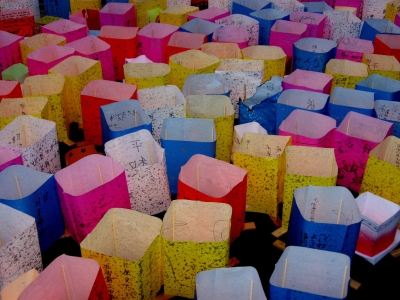In Denmark we do not use nuclear energy at all and are generally highly against the use of nuclear energy, but I thought it sounded exciting to visit Japan’s oldest nuclear power plant in Mito city and learn more about the use of nuclear energy. Apparently about 30% of Japan’s energy resources come from nuclear energy and there are 55 nuclear power plants spread out all over Japan.
The day before we actually visited the Nuclear power plant, we were divided into two large groups, and here we discussed what we actually knew or thought we knew about the use of nuclear energy. We had a wrap up at the end, and the two groups presented what they had discussed. This gave a good insight to the topic and we had some good discussions.
The following day we visited Japan’s first nuclear power plant, which was built in 1966. First we were driven by bus to a museum-like building where we had a very interesting lecture by Dr. Keizo Takahashi. He told us how the nuclear power plant works and how the energy is produced and distributed (See the illustration above). He also told us his perspective on the pros and cons of nuclear power, although it was obvious that he supported the use of nuclear power. One of the pros is that it does not produce CO2 and therefore does not contribute to global warming, which is a big global concern at the moment. The main problem with the use of nuclear power is the waste disposal, because Uranium continues to stay radioactive for many decades. It is hard to dispose of the nuclear waste in an environmentally friendly way. Apparently Sweden has found a way to dispose of their nuclear waste, but the system is very hard to copy for other nations due to their natural resources.
Another problem is the rare, but catastrophic nuclear accidents, like Chernobyl in 1986. It literally affected millions of people for several generations, so the safety precautions must be at its highest! Uranium, which is the dangerous and radioactive element, is not artificially made, but it is a natural resource, and Canada is by far has the greatest exporter of Uranium in the world.
After lunch we discussed the use of atomic bombs, which countries possessed it and general questions regarding this topic. It was very exciting to learn more about this, but at the same time shocking to hear how little impact the inspections have and how relatively small the fines are for offending countries.
Later on, we were given a tour of the nuclear facility, which was exciting. We also saw a proton accelerator, which was still under construction.
The world’s energy resources is running out, for example will the worlds coal reserves be emptied in 150 years if we continue like we do now. Is nuclear power an alternative? I must admit, that I have a hard time deciding…
(Anders Schaumann, Denmark)



